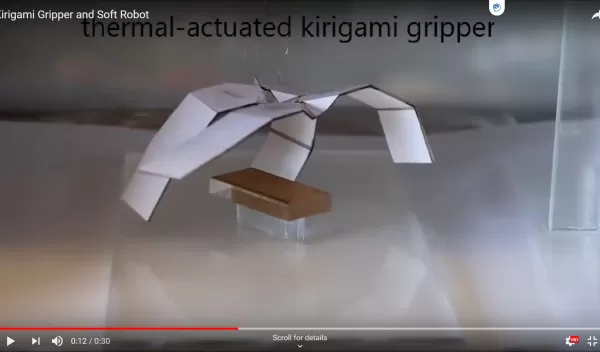
Researchers make reconfigurable robots from self-folding kirigami metamaterials
North Carolina State University researchers funded by the National Science Foundation have demonstrated how kirigami-inspired techniques can be used to design thin sheets of material that automatically reconfigure into new 2D shapes and 3D structures in response to environmental stimuli.
Kirigami is an art form in which a single piece of paper is cut and folded to create new shapes and structures.
"The knowledge developed through this project will advance multiple technologies, including soft robotics and deployable structures where reconfigurable materials are the enabling construct for stretchable electronics, electronic skin, and power generation devices," says Nakhiah Goulbourne, a program director in NSF's Division of Civil, Mechanical and Manufacturing Innovation. The research enriches the library of 3D shape conformations by combining geometry and mechanics through the artistry of kirigami and soft functional materials.
The researchers created a variety of robotic devices as a proof-of-concept for the approach as seen in this video.
A paper in the journal Proceedings of the National Academy of Sciences describes the research. More information can be found in an NC State press release.
"This is the first case we know of in which 2D kirigami patterns autonomously reshape themselves into distinct 3D structures without mechanical input," says NC State's Jie Yin, corresponding author of the paper. "Instead, we apply energy in the form of heat, and the material rearranges itself."
The new "active kirigami" concept relies on a three-layered material, consisting of two outer layers that are not responsive to heat, and a polymer layer in the middle that contracts in response to heat.
The shape and structure of the material are controlled in two ways. Through-cuts, which penetrate all three layers, control the material's range of motion. Etchings, which penetrate the outer layers and expose the heat-responsive polymer, control the angle and direction at which the material folds, as well as how far it folds. As the material folds, it opens the through-cuts, shifting the shape of the sheets into 2D or 3D designs.


